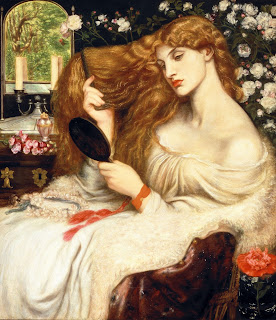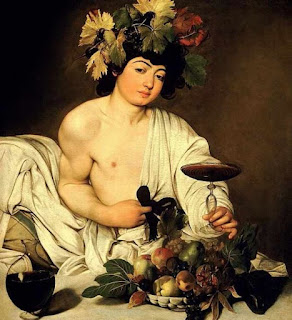Preferences and Perspectives - The Romantic Era
Romanticism, a phrase used to characterize a movement in art, literature, and music that prized freedom of expression; this gave rise to the Romantic period, beginning in England, Romanticism expanded across Europe and the United States. Romanticism was a response to the classical principles that governed creative production at the time. Romantic idealists thought that innermost feelings should be revealed, art should be pleasing to the senses, and imagination should take precedence over reason. Romantics had a strong sense of the past and frequently retold historical stories in their art. The Romantic era lasted no longer than fifty years spanning between 1780 and 1830. There were many different styles of art during this era, and the two I will be choosing is aestheticism and impressionism.
AestheticismThe philosopher Gautier gave birth to the Aesthetic Movement in France at the end of the nineteenth century. Later, it was brought into England, however, in England, Aestheticism can be traced back to poet John Keats and his concept of 'Art as a Thing of Beauty,' as well as the Pre-Raphaelites, a group of artists led by painter Dante Gabriel Rossetti who centered their art on a search for beauty. Aestheticism revolved around the concept of beauty, because it was thought only art can save a man from the death of a soul. Beauty is the sign of a superior spirit which rises above life's vulgarity and the 'ugliness' of life that is not simply physical.
This painting was done by artist Dante Gabriel Rossetti, titled ‘Lady Lillith’. Rossetti first painted ‘Lady Lilith‘ in 1866-68 using Fanny Cornforth as a model, but in 1872-73 he altered it by changing the face to a woman named Alice Wilding. Alice was approximately twenty-five years old when she and Rossetti first met. She was working as a dressmaker and Rossetti spotted her one evening in 1865 and asked her to model for his painting. At the time she did accept but failed to arrive at his studio the next day. Weeks later he ran into her again and ended up convincing her to model for him and go to the studio that same day. The focus in this painting is most definitely Lillith and her beautiful auburn hair, however this painting is also filled with flowers and shows a cluttered, depthless space. The mirror in the background at first glance looks like a window, but you can see the reflection of both the candles and then you find out that it is an exterior nature scene. The white roses in the background are leaning towards and almost into Lillith, almost as if they are admiring her beauty as she is in her hand mirror.
Impressionism
Impressionism originated with a group of Paris-based artists whose independent exhibitions brought them to prominence during the 1870s and 1880s. The term impressionism was coined from Louis Leroy who was a french painter. Impressionism art consists of small, thin, visible brush strokes with an emphasis on light. These paintings were done on ordinary subjects and had an inclusion of movement as an element of human perception and experience. Impressionism tries to capture an impression of what the eye sees at a given moment and the effect of sunlight on the object. Impressionism is an emotion –oriented and beautiful style of art.
This first piece of art is called ‘In the Loge’, painted by Mary Cassatt. In nineteenth century France, the gaze of the observer was very much structured by issues of economic status. In Mary Cassatt’s paintings it shows the relationship between public spectacle, gender, class and privilege. Cassatt was a wealthy American artist who, while residing in Paris, adopted the Impressionist style. Cassatt's sister, Lydia, is the sitter in this painting, appearing to be an upper-class woman in a box seat at the Paris opera. Lydia is depicted holding opera glasses to her eyes, but instead of tilting them down to observe the performance below, she keeps her gaze level. She is looking across the room, possibly at another person in the audience. In the background of faded, blurred people, there is a man who is staring at her from a different box, as he is stuck on her and our gazes, she does not notice him.
Sources:
“Aestheticism.” Wikipedia, Wikimedia Foundation, 26 Oct. 2021, en.wikipedia.org/wiki/Aestheticism.
“Flaming June by Frederic Leighton.” LadyKflo, 4 Aug. 2021, www.ladykflo.com/flaming-june-by-frederic-leighton/.
“Impressionism.” Wikipedia, Wikimedia Foundation, 20 Oct. 2021, en.wikipedia.org/wiki/Impressionism.
“In the Loge.” In the Loge – Works – Museum of Fine Arts, Boston, collections.mfa.org/objects/31365.
“Lady Lilith.” Metmuseum.org, www.metmuseum.org/art/collection/search/337500.
“Romanticism.” Encyclopædia Britannica, Encyclopædia Britannica, Inc., www.britannica.com/art/Romanticism.
“Woman with a Parasol - Madame Monet and Her Son.” Art Object Page, www.nga.gov/collection/art-object-page.61379.html.






Hi Mistelle, I really liked reading your blog on the Romantic Era and your preferred painting style. The final painting you chose to write about "Woman with a Parasol" by Claude Monet is actually one of my favorite paintings. I prefer the impressionist style because of the brush technique the artists use, I even chose to write about that painting as well. I am not sure if this counts as an art element but when you said "Impressionism is an emotion-oriented and beautiful style of art" I thought that was a beautiful way to describe impressionist art. One thing I learned from your blog is that the aesthetic art style was started in France in the late 19th century.
ReplyDeleteI love 'Flaming June', it is beautiful. Great job providing the background information of the pieces.
ReplyDeleteGreat post Mistelle! Flaming June is definitely an amazing piece of work. Leighton's use of colors swept beautifully across this painting. The "Woman with a Parasol" piece is brilliant as well. The brushstrokes create a dazzling wind effect to the painting, not to mention how Claude Monet sketched all of the minor details of grass to include their shadows. Almost reminds me of the "Starry Night" painting by Van Gogh.
ReplyDeleteHey Mistelle,
ReplyDeleteI really like the Woman with the Parasol, it is a beautiful painting. The detail and lines in the painting are amazing. The only thing about this blog is I would explain in more detail how it relates to the art style. I do really like how you explained the elements and the art works you chose are amazing pieces. Good Work!